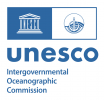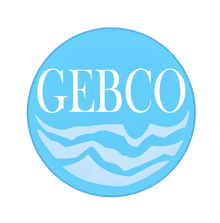The recently-launched Nippon Foundation-GEBCO Seabed 2030 Project aims to bring together all available bathymetry data to produce the definitive map of the world ocean floor by 2030 and make it available to all. Read recent news items about GEBCO and the Seabed 2030 project.
“Disappearance” of Sandy Island
 A recent scientific research cruise, led by the University of Sydney, in part of the South Pacific Ocean between Australia and New Caledonia has reported that "Sandy Island",
shown on many scientific maps, does not exist.
A recent scientific research cruise, led by the University of Sydney, in part of the South Pacific Ocean between Australia and New Caledonia has reported that "Sandy Island",
shown on many scientific maps, does not exist.
Through coastline and terrain model data sets this "feature" has been included in GEBCO's global terrain model. This will be corrected in a future edition.
The "un-discovery" of this island has been reported in news stories around the world and highlights the need for further exploration and mapping of many areas of the seafloor.
A Sandy Island has been shown in various positions on a variety of maps from many countries since the 18th century and its location reported by passing ships. The location has varied because in those days there were often large errors in ships’ navigational positioning. At some point in time the position of the island shown on a particular chart was digitized and became part of a digital data base known as the World Vector Shoreline (WVS). Subsequent to the production of WVS, the island has been removed from hydrographic charts of the region.
However, through WVS Sandy Island lived on. Global land elevation data models such as SRTM30 show land at Sandy Island, apparently because they used WVS in the development of their data sets. In turn, GEBCO used SRTM30 to develop its global model and so for this reason Sandy Island appears in the current GEBCO grid.
The news reports of the "missing island" prompted a search of satellite imagery by the scientific community to try and see if they could identify it from these images. If a reef is shallow enough it may show up as a change in ocean colour, detectable with optical imaging systems such as Landsat or MODIS. However, within a few days, the scientific consensus emerged that no ocean colour anomaly can be seen in the vicinity of Sandy Island. The lack of a colour anomaly simply means that whatever is there is too deep to show up optically.
Traditionally, seafloor depth measurements have been collected by survey ships carrying echo-sounding equipment. However, the oceans cover nearly two thirds of our planet and in the deep ocean there are often large gaps between these survey tracks. Lacking direct depth measurements from ships in this part of the South Pacific Ocean, the builders of the GEBCO global terrain model turned to another source of information to help them determine the shape of the seafloor — gravity anomaly data. Find out more about how gravity data can help determine the shape of the seafloor.
Gravity anomalies, detected with radar satellites, suggest that there is a mountain rising from the seafloor in the region of Sandy Island. However, apparently it does not rise shallow enough to discolour the sea water and so be seen in satellite imagery. The radar satellite gravity technique cannot determine how shallow this feature is, it can only suggest the presence of a "mountain."
The image below shows a model of the seafloor in the region of "Sandy Island" taken from the GEBCO_08 Grid. The tracks showing where measured depth data, collected by ships, were available to generate the model are displayed in black. Gravity anomaly data has been used to help model the shape of the seafloor in this region where measured data are not available. The land data is taken from the SRTM30 data set.

GEBCO's data sets and our history
GEBCO has been involved in producing maps of the global seafloor since the beginning of the 20th century. Our latest bathymetric model, the GEBCO_08 Grid, is a global terrain model at 30 arc-second intervals. It has largely been generated from a data base of ship track soundings with interpolation between soundings guided by satellite-derived gravity data. Where they improve on the existing grid, data sets developed by other methods have been included.
The GEBCO_08 Grid is accompanied by a Source Identifier (SID) Grid, this shows which cells in the GEBCO_08 Grid are based on soundings or existing grids and which have been interpolated.
Further details about the development of bathymetric grids can be found in the Frequently Asked Questions section of our web site.
Find out more and how to access GEBCO's global bathymetric grids from the internet.







